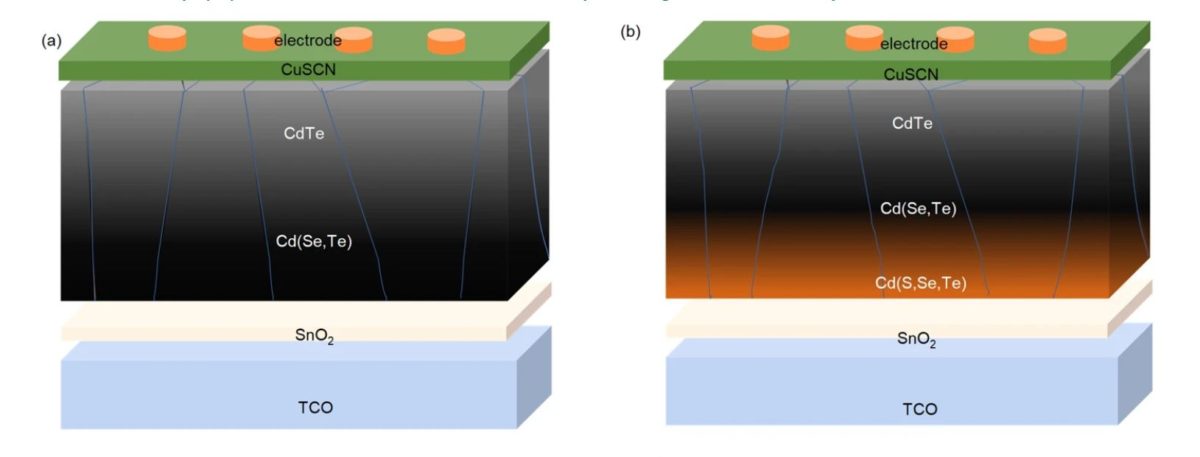Researchers from the University of Toledo and the US Department of Energy's Oak Ridge National Laboratory have used bandgap gradient for the first time to improve the performance of cadmium selenium telluride (CdSeTe) solar cells based on a commercial Tin(IV) oxide (SnO2) buffer layer.
The scientists described their findings in “20%-efficient polycrystalline Cd(Se,Te) thin-film solar cells with compositional gradient near the front junction,” which was published in Nature Communications. They said that commercial SnO2 buffers are very stable and can be easily reproduced with desirable electron conductivity.
“Benefit from these advantages, SnO2 has been successfully used for decades in CdTe manufacturing,” they said, noting that this buffer tech has recently been replaced with zinc magnesium oxide (ZMO). “The major obstacle is the low electron conductivity of ZMO buffer, which is difficult to improve even with extrinsic doping.”
The US team said the bandgap gradient was already applied successfully in other types of thin-film solar cells with the aim of improving their open-circuit voltage, adding that it should be used in CdSeTe devices by incorporating a cadmium sulfide (CdS) thin layer in the front junction region while avoiding the formation of a detrimental interface.
“The key to this success was the incorporation of oxygenated CdS and CdSe layers before the deposition of CdTe absorber layer,” they said.
Popular content
The academics built the cell with a transparent conductive oxide (TCO) layer, a SnO2 buffer layer, the above-mentioned oxygenated CdS and CdSe layers, a CdTe layer, and a copper(I) thiocyanate (CuSCN) hole extraction layer.
Tested under standard illumination conditions, the device achieved a power conversion efficiency of 20.03%, an open-circuit voltage of 0.863 V, a short-circuit current of 29.2 mA cm−2, and a fill factory of 79.5%. A reference cell built without bandgap gradient showed an efficiency of 18.3%, an open-circuit voltage of 0.834 V, a short-circuit current of 28.9 mA cm−2, and a fill factor of 76.1%.
“We have demonstrated an approach to successfully introduce a bandgap gradient penternary Cd region in Cd(Se,Te) solar cells without the formation of a photo-inactive layer and a detrimental hetero interface,” the scientists stated. “The reduced nonradiative recombination was confirmed by time-resolved photoluminescence (TRPL) and photoluminescence quantum yield (PLQY) measurements.”
This content is protected by copyright and may not be reused. If you want to cooperate with us and would like to reuse some of our content, please contact: editors@pv-magazine.com.



By submitting this form you agree to pv magazine using your data for the purposes of publishing your comment.
Your personal data will only be disclosed or otherwise transmitted to third parties for the purposes of spam filtering or if this is necessary for technical maintenance of the website. Any other transfer to third parties will not take place unless this is justified on the basis of applicable data protection regulations or if pv magazine is legally obliged to do so.
You may revoke this consent at any time with effect for the future, in which case your personal data will be deleted immediately. Otherwise, your data will be deleted if pv magazine has processed your request or the purpose of data storage is fulfilled.
Further information on data privacy can be found in our Data Protection Policy.